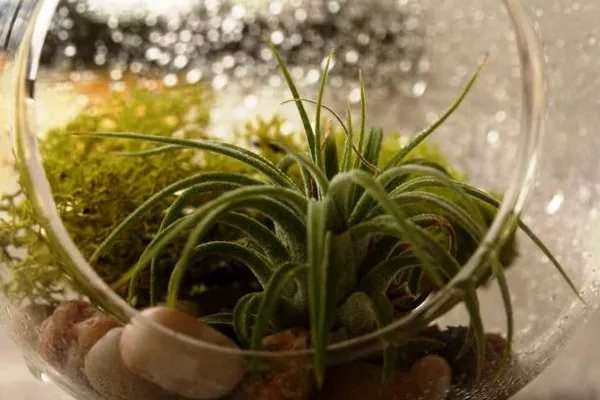Air plants, also known as Tillandsias, have gained immense popularity in recent years for their unique beauty and low maintenance requirements. These fascinating epiphytes don’t require soil to grow, making them a versatile addition to any home or office. However, like all living organisms, air plants require proper care to thrive. In this article, we will explore the key factors to consider in keeping air plants alive and thriving.
Understanding Air Plants
Before delving into the care tips, it’s important to understand what air plants are and their unique characteristics. Air plants belong to the Tillandsia genus, which encompasses hundreds of species native to the Americas. They are known for their ability to grow on other surfaces, such as trees, rocks, and even telephone wires. Unlike traditional plants, they do not rely on soil for nutrients but instead absorb moisture and nutrients through their trichomes, tiny hair-like structures on their leaves.
Proper Lighting
One of the most critical factors in air plant care is providing the right amount of light. Air plants thrive in bright, indirect light. Place them near a window with filtered sunlight or in an area with bright, but not direct, sunlight. Avoid exposing them to harsh, intense sunlight, as it can scorch their leaves.
If you’re growing air plants indoors, you can supplement their light by using artificial grow lights. Choose a grow light specifically designed for houseplants, and position it about 6-12 inches above your air plants for 12-14 hours a day. This mimics their natural habitat and ensures they receive adequate light for photosynthesis.
Proper Air Circulation
As the name suggests, air plants require good air circulation to thrive. Unlike potted plants, which can suffer from overwatering if left in stagnant air, air plants benefit from constant airflow. This helps prevent rot and fungal issues by keeping their leaves dry between waterings.
To ensure proper air circulation, avoid overcrowding your air plants. Give them some space to breathe, and consider using a fan on a low setting to promote air movement in their vicinity. Good ventilation is especially important in humid environments, as it helps prevent moisture from accumulating on their leaves.
Watering Techniques
Watering air plants is a critical aspect of their care, and it’s crucial to strike the right balance. Overwatering is a common mistake that can lead to rot, while underwatering can cause the plant to become dehydrated and eventually die. Here are some essential tips for watering air plants:
a. Submerge and soak: The most effective way to water air plants is by submerging them in water. Fill a container with room temperature water and immerse your air plants for 20-30 minutes. Use a container that is deep enough to fully submerge the plants but not too deep to prevent drowning.
b. Frequency: Watering frequency depends on the local humidity and environmental conditions. In general, mist your air plants with water every 2-3 days, and submerge them once a week. However, adjust the schedule based on your plant’s needs. If the air is particularly dry, increase the frequency, and if it’s humid, reduce it.
c. Drying: After soaking or misting, it’s crucial to let your air plants dry completely. Inverted drying is recommended, allowing excess water to drain from the center of the plant to prevent rot. Place them upside down on a towel or paper towel until they are fully dry, which usually takes a few hours.
Temperature and Humidity
Air plants are tropical and subtropical plants, and they thrive in temperatures between 50°F (10°C) and 90°F (32°C). It’s essential to protect them from extreme cold or heat, as they are sensitive to temperature fluctuations.
Maintaining the right humidity level is also crucial for air plant health. Aim for a humidity level of 50-60% in your home. In dry climates, consider using a humidity tray or a humidifier to provide the necessary moisture. Conversely, in excessively humid conditions, ensure adequate air circulation to prevent fungal growth.
Fertilization
Air plants obtain most of their nutrients from the air, but they still benefit from occasional fertilization to promote growth and flowering. Use a specially formulated air plant fertilizer that is diluted to half the recommended strength. Apply the fertilizer by misting your air plants once a month during the growing season, which typically falls between spring and early autumn.
Reproduction
Air plants reproduce through offsets, also known as “pups.” These are smaller plants that grow at the base of the parent plant. As the pups mature, they can be separated from the parent plant using clean scissors or sharp shears. Be sure to allow the pups to develop a few healthy roots before separating them. Once separated, you can follow the same care guidelines for the pups as you do for mature air plants.
Conclusion
Air plants are captivating additions to any space, known for their resilience and unique appearance. By providing them with the right care, including proper lighting, good air circulation, and a well-balanced watering routine, you can ensure that your Tillandsias not only survive but thrive in your home or office. Remember to monitor their specific needs, adjust care routines as necessary, and enjoy the beauty and intrigue these remarkable plants bring to your surroundings. With the right care, your air plants will flourish and continue to be a source of wonder and inspiration.


